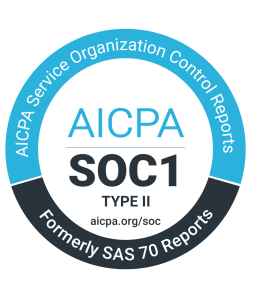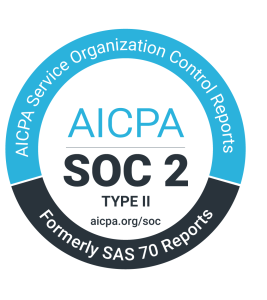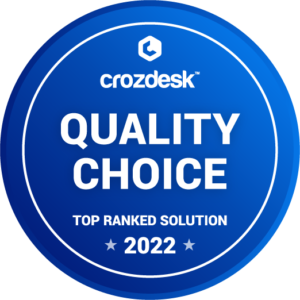No. 1: Planning Your Coverage Area for Cannabis Delivery
Q. Let’s start with cannabis delivery zones. Tell us what we need to do as a delivery service in terms of coverage area to be most successful.
A. You need to understand where your central hub is going to be located. From there you can understand what your reach is gonna be for your customers, so I really encourage you to look at a map, get some sort of 30 to 40 mile radius depending on how many drivers you think you can deploy. Then understand your minimums, your delivery minimums. You should not be driving 100 miles to deliver a $20 order.
You need to understand the difference in cost if you’re going to be covering an area like San Francisco, which is small and compact and therefore difficult to navigate by vehicle, versus somewhere like Orange County or Riverside that’s easier to get around. So cost is going to impact the customer experience. You may not be able to meet a one-hour cannabis delivery window in certain places, so understanding the coverage area and planning it out can actually give you a competitive advantage.
Alongside that is the taxes in your area of coverage. If you don’t understand your area then you’re probably not taking into consideration the local business taxes within each of those areas. You are ultimately responsible for paying the municipality the proper business taxes. The tax in San Francisco is different than Oakland. So if you literally cross that bridge, you better have a system that can dynamically understand the difference in taxes and apply the right rate. We have found features to calculate different tax rates by zip codes to be a missing link in a number of cannabis delivery POS software putting operators at risk.
BLAZE is one of the few systems that can have different tax rates per city and ZIP code. We can help you enforce that. Or if you want to use a partner like Tax Nexus, they actually do all the calculations for you behind the scenes, but they do that through our integration. BLAZE can also distinguish between different geographical regions in which you can have certain purchase requirements and fees that you can apply, which is going to be really important to enforcing your business protocols.
No. 2: Choose a Fulfillment Model that Best Suits You
Q. So now that I understand my coverage area, I’m going to need to figure out how my product is actually going to get into my customers’ hands. What are some of the options here?
A. One methodology is what I call the “pizza delivery model,” which is very good for smaller locations that want a more predictable cannabis delivery schedule. An order comes in, it’s scheduled for a certain time. The driver is coming back to the hub picking up one, two, three, four or five orders that are pre-built ready to go by the team. The key thing with this model is they do not have the ability to fulfill the order on the road.
That leads us to the second model, which I call “warehouse on wheels.” In California, drivers can carry upwards of $5,000 in inventory with them — $3,000 in planned inventory, meaning you’ve got orders for those already, and $2,000 of unallocated inventory, which means that if they’re going to do 10 deliveries and let’s say they get a phone call on their sixth delivery, they actually might be able to fulfill it without going back to the hub to pick it up because they have extra inventory on hand.
Determining what method you want to go with will help determine your staffing needs and inventory requirements.
The impact of not doing this properly is going to be customer experience mostly. If you can tell customers, hey we know this area and can deliver to you in 30 minutes, you’re going to have a repeat customer right there.
And there’s some legal impact as well in that three-and-two rule — $3,000 and $2,000. With BLAZE, what we do is that when you go to stock your drivers up we have an area called the transfer inventory section. It’s specifically built for delivery services in California and what we do is we show the total amount of retail value that you’re transferring out to a driver so that you do not exceed the legal limits. Compliance is even more stringent than a storefront so you have to take just as much effort selecting delivery software as you do when picking your dispensary POS software.
Our driver application and dispatching portal allow you to pack the order out in the field, which is unique in the industry. For the driver application the driver can scan each item with the camera on their phone so that we can track the appropriate Metrc package ID and report that properly. Our dispatch portal is integrated into our dispensary POS software driving a lot of efficiencies for operators.
No. 3: The Importance of Good E commerce in Cannabis Delivery
Q. It’s really not enough to just start a delivery service and hope that customers will find you, because chances are they won’t. What should I do to get noticed?
A. Ecommerce is freaking critical! I don’t think enough cannabis delivery services today understand and invest enough into their ecommerce properties. Your ecommerce presence needs to be taken extremely seriously because that will be your lifeline for your business — from an SEO standpoint, from a marketing standpoint, from an ease of use standpoint. If it’s not a pleasant experience from an ecommerce or digital properties standpoint, your customers are just not going to come back because it’s too hard to order. Really focus on ecommerce, decide what you’re going to do and the type of investment you want to deploy.
And when I say ecommerce, it’s understanding that that could be omnichannel. I’m gonna sell my website property as well as other commerce properties that I partner with.
BLAZE has several ecommerce vendors that we are fully integrated with. We’re the only ERP platform for cannabis point of sale software that integrates with WooCommerce, the WordPress extension. That allows sophisticated operators to really customize their site to their heart’s content. And we’re taking care of all the compliance needs, the different taxes, making sure someone doesn’t place an order for an item that does not have inventory. Everything is real-time integrated with BLAZE.

No. 4: Who Takes and Routes the Orders?
Q. At this point I have a good understanding of my coverage area, how to promote myself online and how my drivers will operate. But who’s going to take the orders?
A. It’s really about understanding whether you want to have a dedicated dispatch team on staff. Or are you going to put that burden on a driver to do while they’re out in the field? Depending on your size, your investments, your resources available, we’ve seen both. Some people have two to three dispatchers on hand. All they do is sit in front of a computer and take phone calls, route drivers. To me that’s the best method to do it. However, if you don’t have enough resources it gets very difficult and you have to put that burden on the driver. So understanding how your dispatch is going to flow, from a call coming in, from an online order coming, how that’s going to get routed to the appropriate driver is a critical piece to cannabis delivery because California allows you to have unallocated inventory on the road.
BLAZE comes with a built-in dispatch portal that’s specifically built to optimize the workflow for a dispatcher, either someone that’s taking a phone call order or having the order come in through other methods like your website or another partner. It’s something unique to BLAZE that’s been optimized through experience working with our own customers.
No. 5: Don’t Sleep on Documentation
Q. I’ve been working so hard to get my cannabis delivery service up and running that I haven’t really thought about all the paperwork. Is this going to get me in trouble?
A. This is where I see the biggest gap today. I remember for my cannabis delivery when I was using dispensary POS software I had to track tax and other regulatory requirements separately. You can get in big trouble for not doing this stuff properly. A lot of customers don’t read the regulations or don’t comprehend them fully, but for each delivery that you do you need to have a corresponding delivery manifest. This is a very specific document that California is looking for. This document needs to be on hand with that driver at any given point in time. So as soon as they leave the hub with product, let’s say four orders, they should have four manifests with them in hand and ready to present to police in the event of being pulled over.
Additionally there’s another piece of documentation that needs to be with drivers at all times and we call it the inventory log. What this shows is what you left the building with and what percentage of that inventory is allocated for an order that’s already in the system and what is not allocated. That comes down to being able to prove that I’ve got $3,000 worth of allocated inventory or $2,000 worth of uncatalogued inventory.

So while documentation is critical, no one likes to use documents. BLAZE Retail has a driver app that allows you to produce these manifests directly in our cannabis delivery software and these inventory logs are extremely critical to keeping you compliant, successful and safe. We also have the ability to generate these manifests and other documentation through our website portal as well. So if the dispatcher wants to print all these before the drivers go out — which they should — they can easily do that with our system and have them ready to go with the bag of product.



